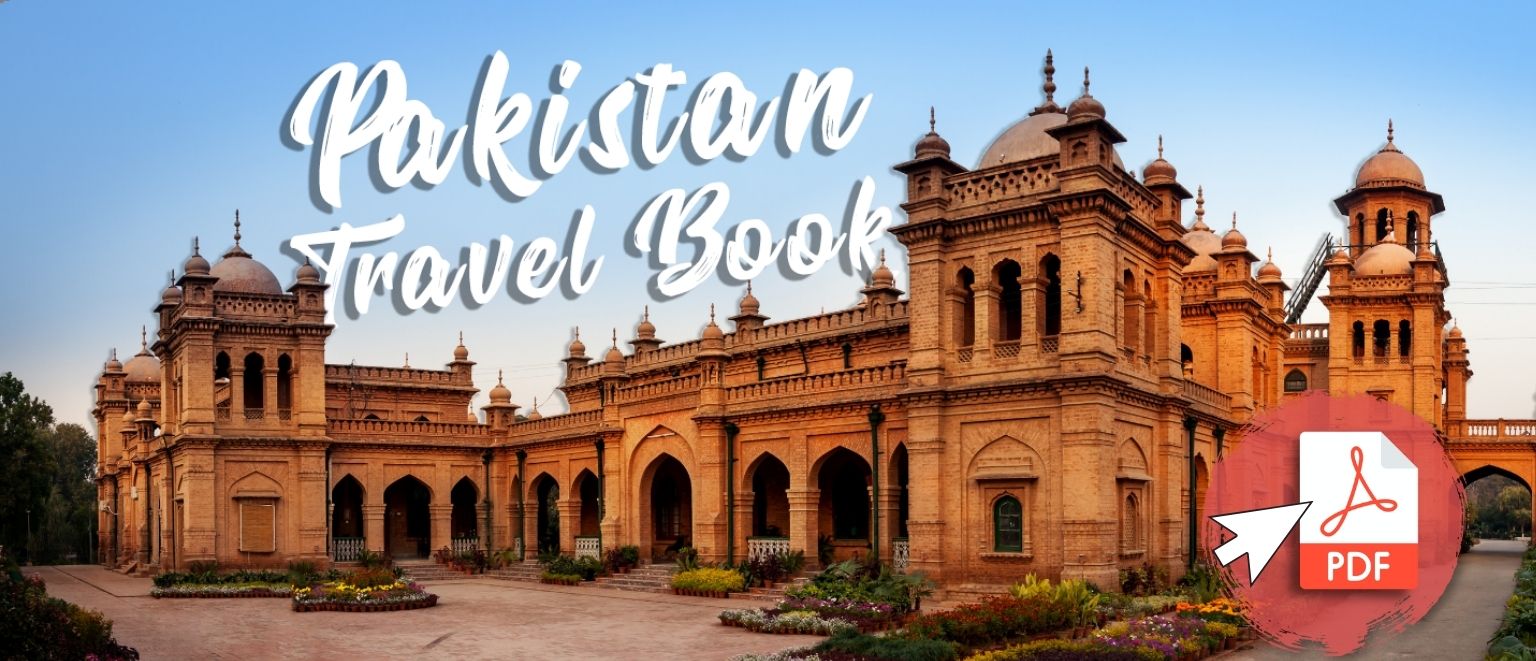The Broke Backpacker is supported by you. Clicking through our links may earn us a small affiliate commission, and that's what allows us to keep producing free content 🙂 Learn more.
Pakistan is a lively nation of friendly people and great food that the rest of the world is just discovering. A melting pot of different cultures and geography, the diversity of this country is what makes it so special.
From mountainside restaurants to eateries found next to a busy metropolitan road, the vibrant food community leaves no stone unturned to find the best joints around them. The locals celebrate food every day and while they take great pride in their traditional food, the chefs around the country are always one-upping each other with innovations and a new twist to eastern and western food.
In a country where there are food options galore, choosing your next meal can be a bit daunting. So, when visiting Pakistan for the first time, make sure you already have some of the top-tiered Pakistani food on your bucket list. To help you experience the best, we have made a list of the top dishes in Pakistan, that you have to try at least once because that is all it takes for you to fall in love.

Unlock Our GREATEST Travel Secrets!
Sign up for our newsletter and get the best travel tips delivered right to your inbox.
What is Food in Pakistan Like?
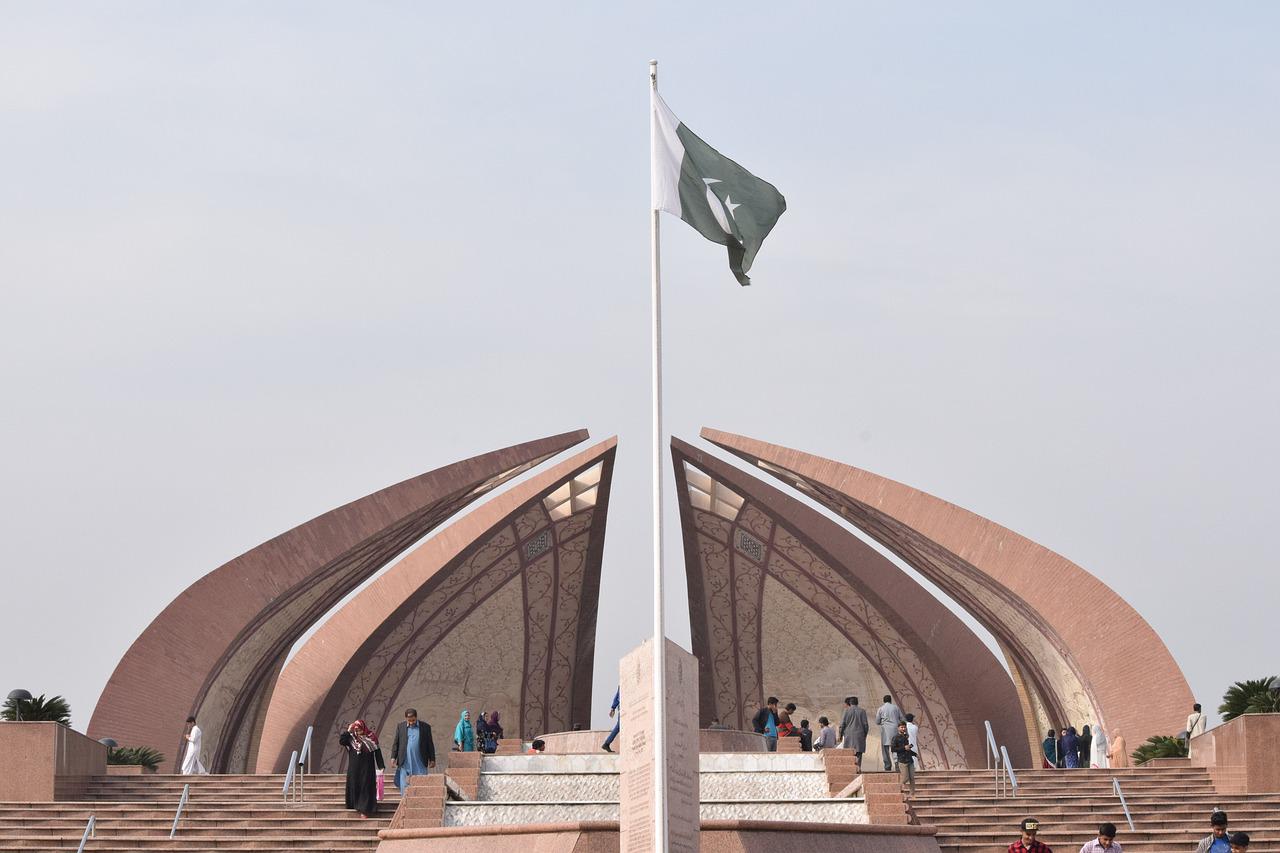
The Broke Backpacker is supported by you. Clicking through our links may earn us a small affiliate commission, and that's what allows us to keep producing free content 🙂 Learn more.
Pakistan might be a small country, but hundreds of different ethnicities and their subgroups call it home. Then there’s the geographical diversity with coastal cities, mountainside villages, hilly towns, riverside townships, and agricultural provinces. All this diversity leads to cultural variety, and therefore an assortment of popular dishes defined by its people. Some things, however, remain common throughout the country and no food is complete without a plate of boiled rice or roti. Roti is what you’d call a flatbread and is prepared in many different ways, giving each of them a distinct flavor and texture.
Exploring Pakistan will be made even more special with the tasty cuisines that will accompany your travels.
The nation produces hundreds of different spices and knows exactly how to add them to the food to enhance the taste. While full of flavors, Pakistani cuisines are also hot! If you’re not used to red peppers and green chilies, better keep a glass of milk next to you at every meal.
While you won’t find pork, your meat choices will include chicken, mutton, beef, lamb, and fish. Food in Pakistan is heavily influenced by the Mughal culture but has also drawn inspiration from its neighboring countries, now resulting in cuisines that are entirely Pakistan’s own.
This outstanding food tour in Karachi will take you where the locals venture for the best of the best. And if you are exploring the walled city of Lahore, take this street food tour and your tastebuds will thank you for it!
“Broke but Backpacking” is a WhatsApp community full of passionate travellers. A space to connect with like-minded backpackers and be the first to hear about exclusive deals and giveaways designed just for the community.
If you’re looking for tips, stories, and inspiration for your trip to Pakistan, you should 100% join the legends in our “Backpacking Pakistan” group chat.
Join the CrewPakistani Food Culture Across the Country
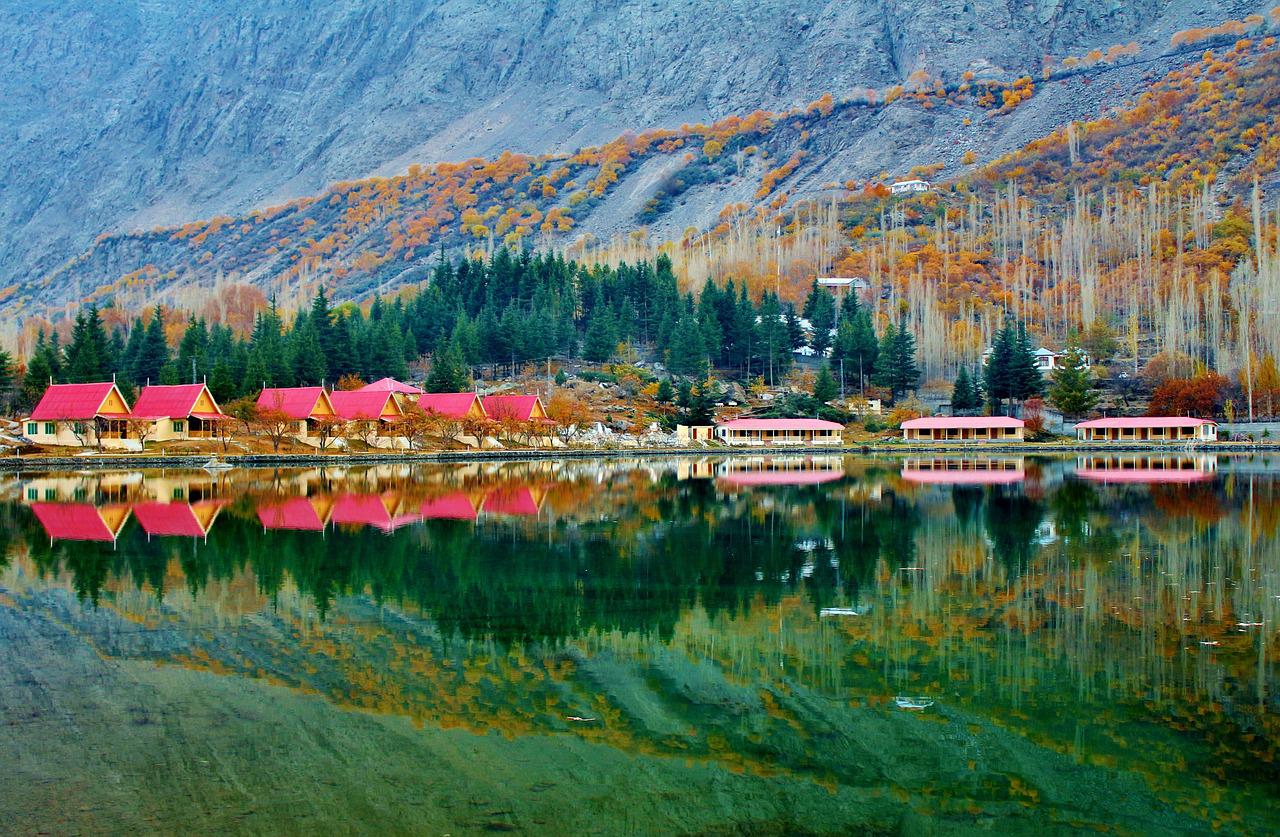
Food in Pakistan remains at the center of all the countries’ celebrations, festivities, weddings, and even funerals. The Islamic month of Ramadan as well as Eid-ul-Fitr and Eid-ul-Adha adds even more fervor to food preparations and dine-outs.
Every city and village in Pakistan is famous for its particular brand of dishes, and many locals and tourists take great joy in traveling across the country and enjoying each specialty. The exquisite recipes of Pakistani food guarantee unique flavors.
The major cities even organize food festivals on massive scales. There are entire streets dedicated to food, and every household has its own food traditions to celebrate.
If you needed another reason to visit Pakistan, the food should definitely be it!
484 pages with cities, towns, parks,
and ALL the out-of-the-way places you will WANT to know.
If you truly want to discover Pakistan, download this PDF.
The 15 Most Iconic Pakistani Food Items of All Time
Pakistan has the best, most appetizing food of all time, so get ready for pure bliss. From Karachi to Gilgit-Baltistan, every city and village has a special feast waiting for you.
Here are some of the most famous Pakistani food for you to try:
1. The Most Popular Pakistani Dish – Biryani
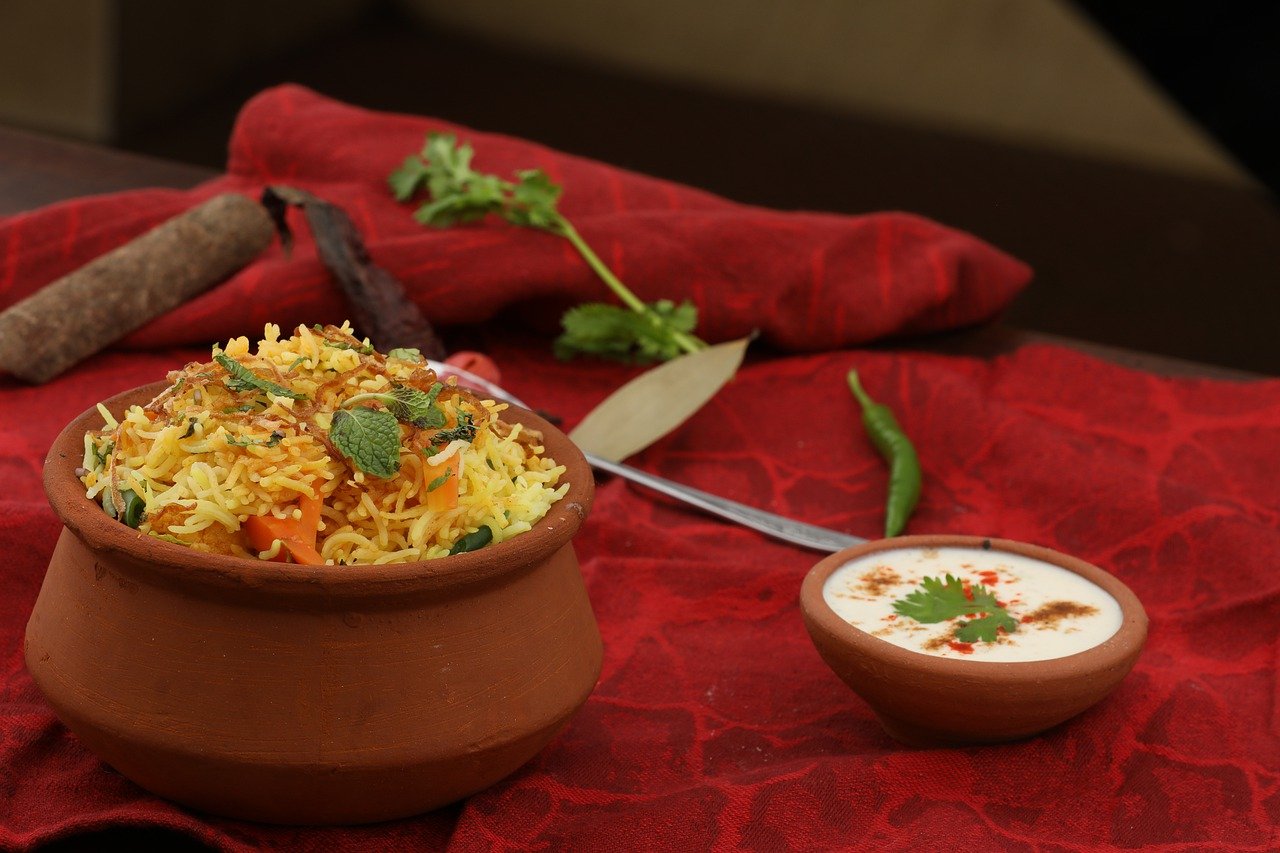
Biryani is a popular Pakistani food, and you may think its the same as what you order from your local Indian, but not quite. If you think you’ve had biryani before, you’re in for a surprise.
Biryani comes in many variations, but it has a distinct flavor that food vendors, chefs, and locals of Karachi have mastered. A concoction of rice, meat, curry, potato, tomato, herbs, and spices, the flavors burst in your mouth right from the first bite. Paired with fresh salad and raita (a side dish prepared from yogurt) this seriously addictive Desi food is something you’ll see on any Pakistan adventure tour.
2. The Go-To Pakistani Breakfast – Halwa Puri
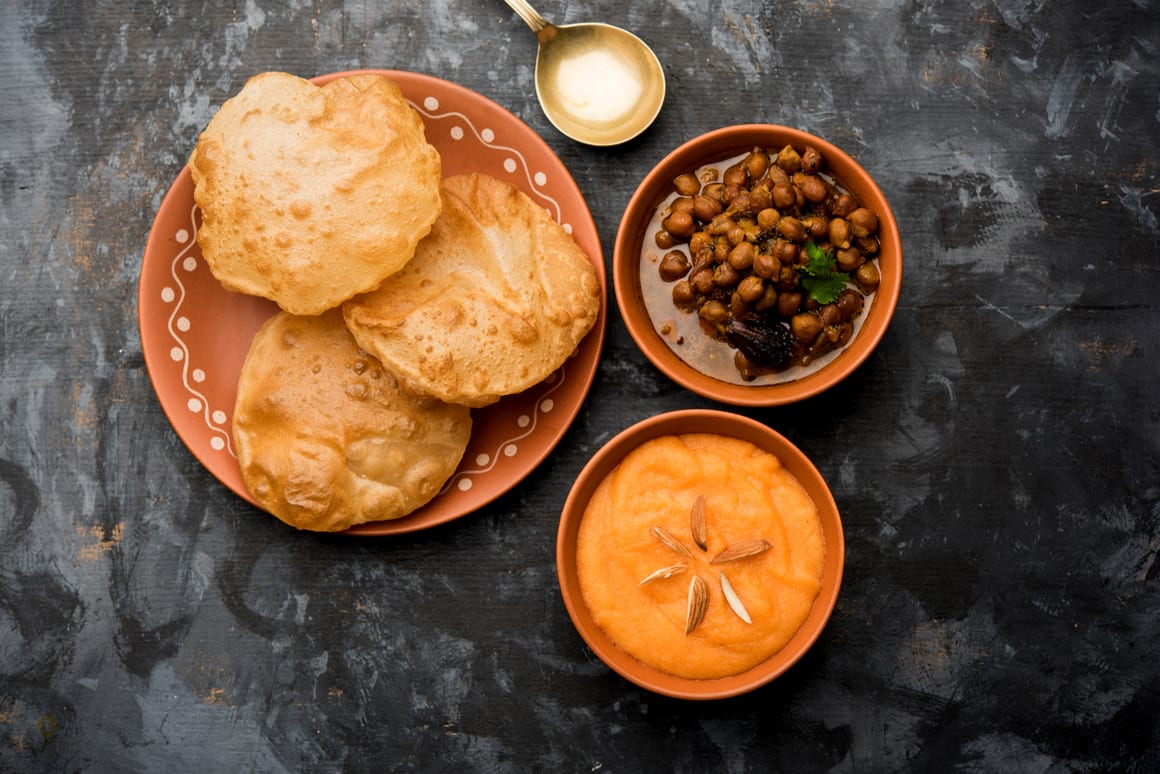
While the majority of the world goes light and healthy on breakfast, Pakistan get daring with a heavy combination of Halwa Puri. Once you get a taste of it, you’ll know exactly why.
A popular breakfast platter throughout the country, the dish includes deep-fried flatbread called puri, an orange-colored dessert prepared from semolina and ghee called halwa, and two different types of curries, one containing potato and the other containing chickpeas. Not only is it mind-blowingly tasty but it’s also vegan-friendly! This breakfast meal is so filling, it will last through to lunch.
3. The Most Beloved Pakistani Street Food – Samosas
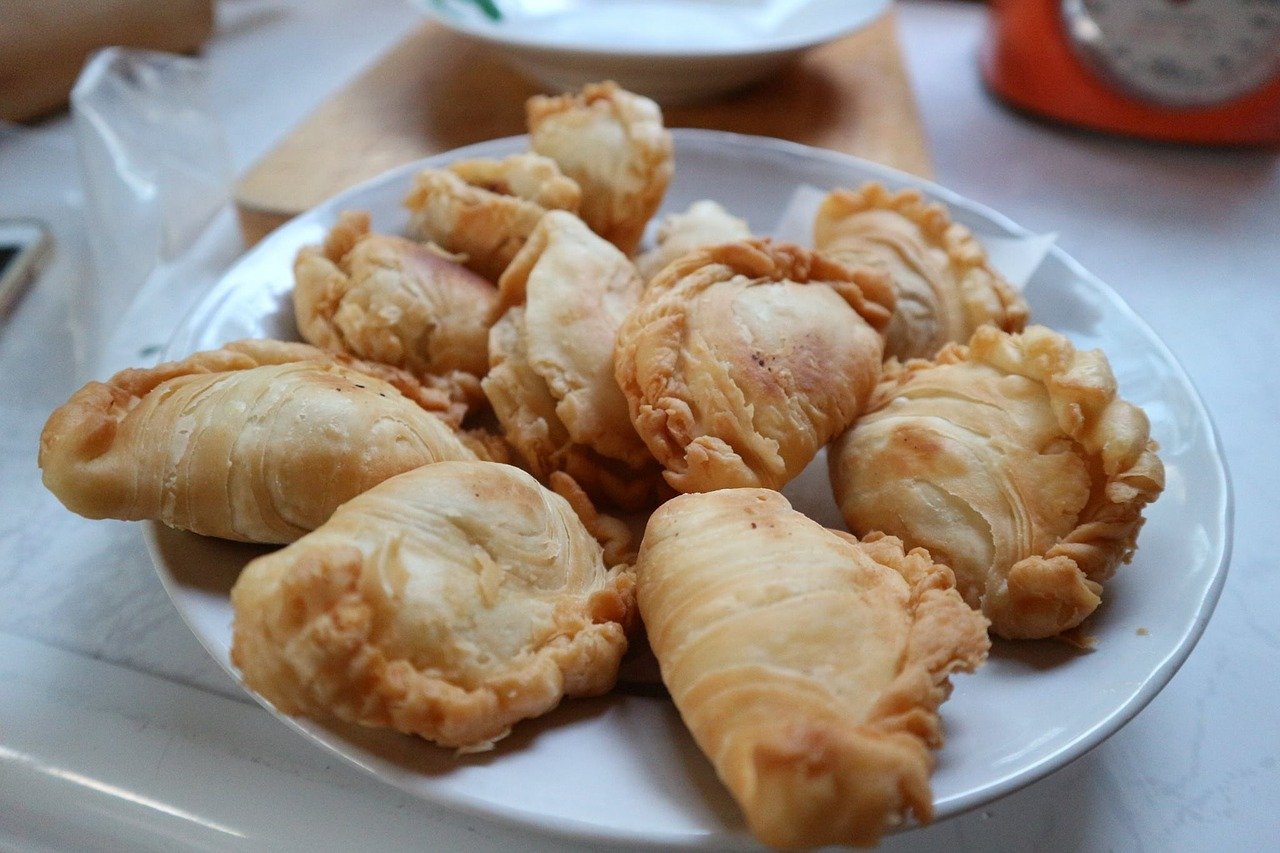
Every day in Pakistan, as the afternoon approaches, bakeries and roadside vendors heat oil in big old woks and begin the meticulous process of deep-frying samosas. By evening, they’re all gone.
This beloved street food comes from the 9th century and is nowhere near losing its popularity. You can have samosas every day as an evening snack, and never tire from it. Traditional samosas are pockets made from white flour flatbread and filled with either seasoned potatoes or spicy beef mince. They are triangularly shaped and deep-fried so they are crispy from the outside and unbelievably delicious from the inside.
Recent innovations have also led to chicken mince samosas. You can tell which one is which by their different shapes. During the month of Ramadan, the demand for samosas reaches another level for being the majority’s favorite iftar-time snack.
4. The Most Traditional Pakistani Food – Nihari
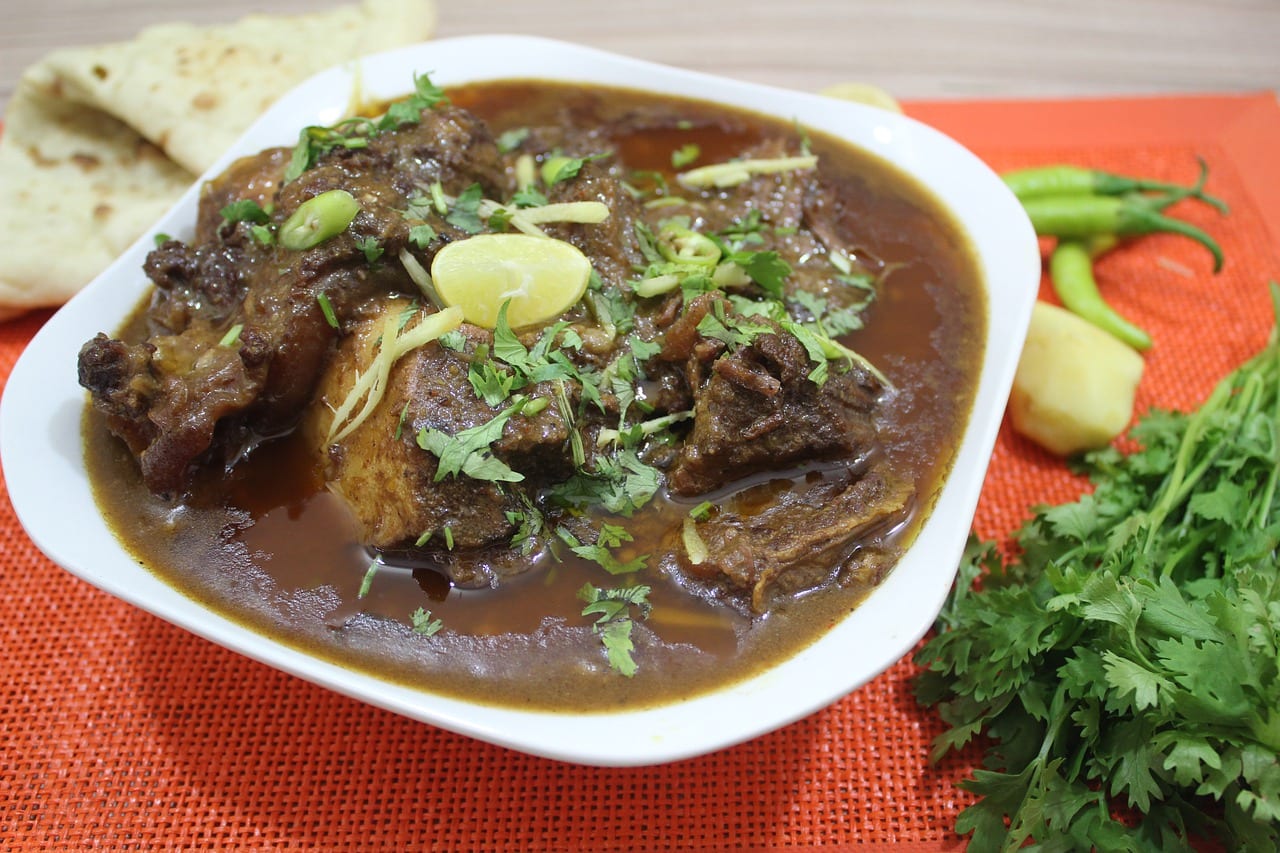
We promise that regardless of your travel experience and exposure to other cultures, nihari is nothing like you’ve tasted before.
This traditional Pakistani food dates back to the Mughal Kings who’d enjoy it as a royal feast after morning prayers. The imperial chefs would cook it all night to be ready just in time.
So, what is nihari, and what makes it such a star-spangled dish? Think of slow-cooked beef shanks, bone marrow, and brain in flavorful spices, ginger-garlic paste, and onions. The gravy is cooked for hours until the meat is tender and fully immersed in flavors, and the oil separates – which is then removed. The rich stew is given a thick consistency by adding a paste of flour and is topped with roghan (the oil that was removed before). Garnished with julienned ginger, green chilies, and lemon juice, there’s no other way to serve nihari than piping hot along with naan fresh out of the tandoor.
Join our entrepreneurship retreat in Bali!

Ahoy friends, Will here! Introducing a very special project that involves YOU – An 8-day immersive experience in Bali, where I have been living for 7 years now.
If you’re passionate about freedom and designing your dream life, this is your chance to join like-minded folk on the same path and learn from my own wins, losses and lessons over my fifteen years of entrepreneurship, whilst soaking in the best of beautiful Bali.
Expect daily workshops, recharge practices, intention setting and fire ceremonies and perhaps a cheeky game of pool against myself, the one and only undefeated pool legend. All while experiencing the island’s best-kept secrets ?
5. The Comfort Food of the Nation – Dal Chawal
You’ll find locals debating which is the best Pakistani food between the fancy biryani and comparatively simple, dal chawal. Where biryani is all spices, dal chawal is the nation’s comfort food consisting of boiled basmati rice called chawal and lentils cooked until they acquire the preferred watery or thick consistency. The dal is then finished off with tadka (curry leaves, cumin seeds, chopped garlic cloves, and chopped onions sizzled in ghee and poured directly over the cooked lentils).
While you can eat the meal by pouring a generous helping of dal on rice, it isn’t complete until you serve it with either fried fish, Shami kebab, fresh salad, or achaar. People have different preferences and can get quite creative with their side dishes.
6. Food for Festivities – Seekh Kebab
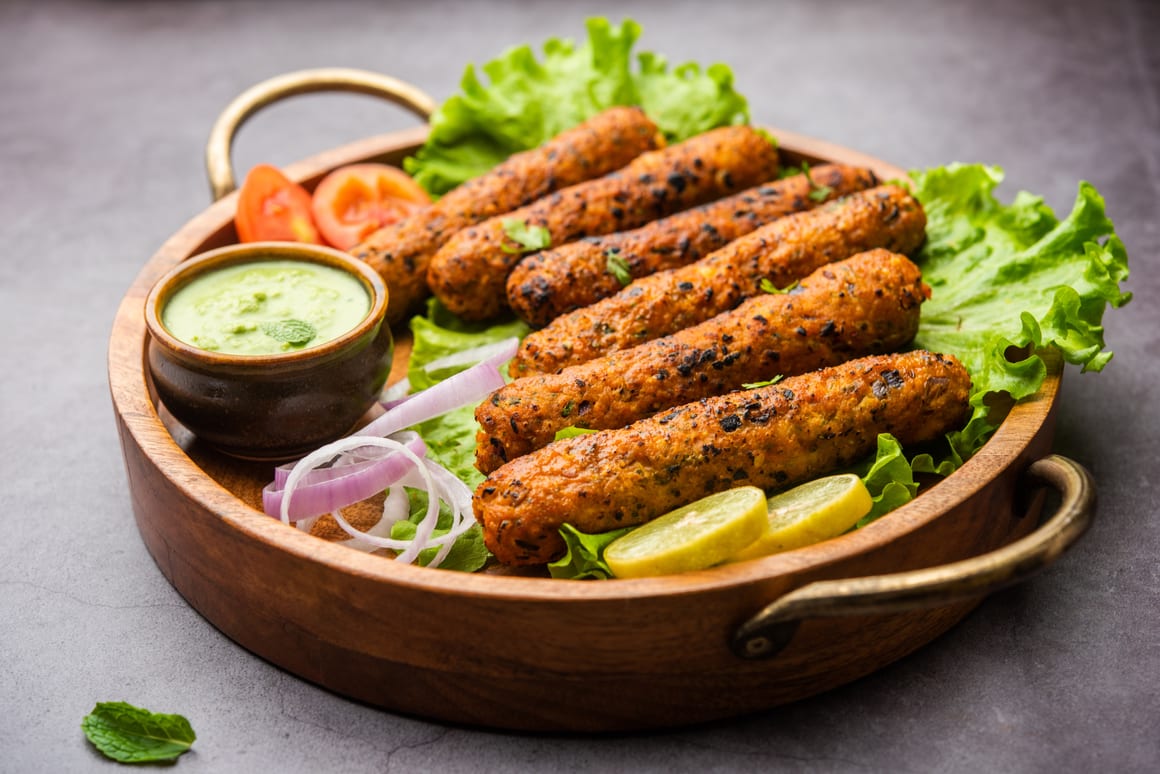
BBQ is a whole other food category in Pakistan, and has so much variety that it might take a while for you to go through all of them. It doesn’t help that now and then restaurants get creative and introduce a whole other slew of mouthwatering BBQ options.
One BBQ dish that you can never go wrong with, is seekh kebab, which translates into skewer kebabs. One of the most popular foods in Pakistan, seekh kebabs are prepared by marinating minced beef or mutton in spices and leaving it for hours, sometimes days. They are then shaped and molded around long skewers and grilled on coal until they are succulent and tender. They are best served with sliced onions, green chatni, and paratha – flatbread made with white or wheat flour and cooked in ghee on a hot iron skillet. Some even enjoy it with dal chawal.
7. Pakistan’s Most Favorite Beverage – Chai
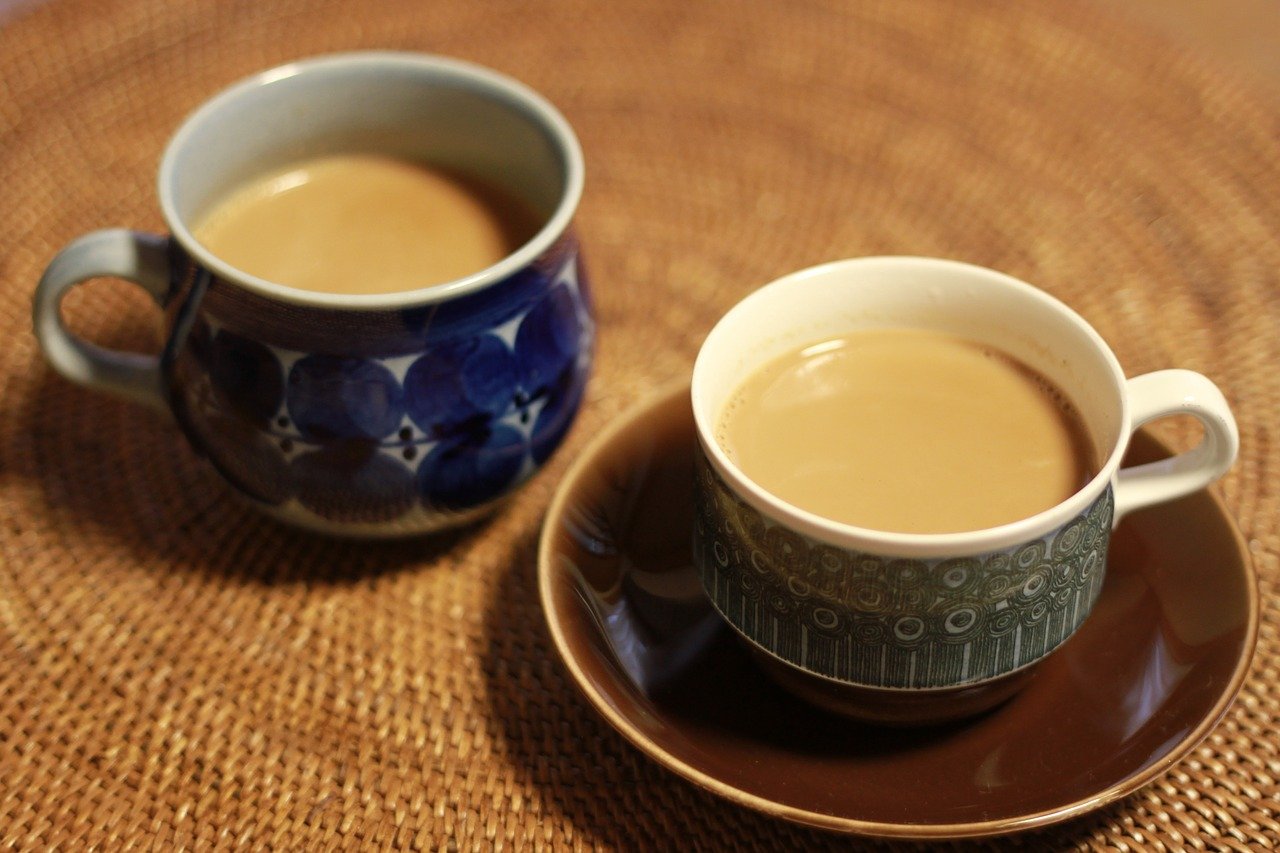
Tea has many forms, and the one preferred by Pakistanis is called chai. Chai has the same value in a Pakistan life as water. Life does not move on and the day doesn’t start without a cup of chai. From elites to the labor class, this beverage remains constant in all circles.
While there are many variations, the most famous form of chai in Pakistan is prepared with milk, water, tea leaves, and sugar, with the occasional addition of cardamom. The rich brown color is telling of a well-prepared chai. There are tea shops everywhere in Pakistan, even in the most remote places.
One popular variation of chai is called Matka chai, which is prepared over coal and served sizzling in earthenware called Matka. Chai in Pakistan is never guzzled down in a hurry and is always enjoyed with family, friends, and good conversations.
8. The Most Innovative Street Food – Katakat
If you ever find yourself on one of the many food streets of Pakistan, a distinctive and rhythmic sound will pique your curiosity. This is the typical sound of someone preparing kata-kat nearby. Named after the sound of its preparation method, kata-kat is a meaty feast and one of the most popular street foods in Pakistan. It’s one of the few dishes that no one dares prepare at home because few can get the taste – and the rhythm– exactly right.
The dish is prepared by adding a multitude of boiled and steamed goat, lamb, or cow organs to a flat iron skillet, adding spices and other ingredients, and cooking until the flavors are well incorporated. Then, the cook takes two special steel spoons with sharp edges and starts chopping them with impressive accuracy, making the notorious clang and ping noises that draw the crowd in. Kata-kat is best served with naan. In case offal is not your cup of tea, you can always go for fish kata-kat.

We’ve tested countless backpacks over the years, but there’s one that has always been the best and remains the best buy for adventurers: the broke backpacker-approved Osprey Aether and Ariel series.
Want more deetz on why these packs are so damn perfect? Then read our comprehensive review for the inside scoop!
View on Osprey9. The Most Indulgent Pakistani Flatbread – Paratha
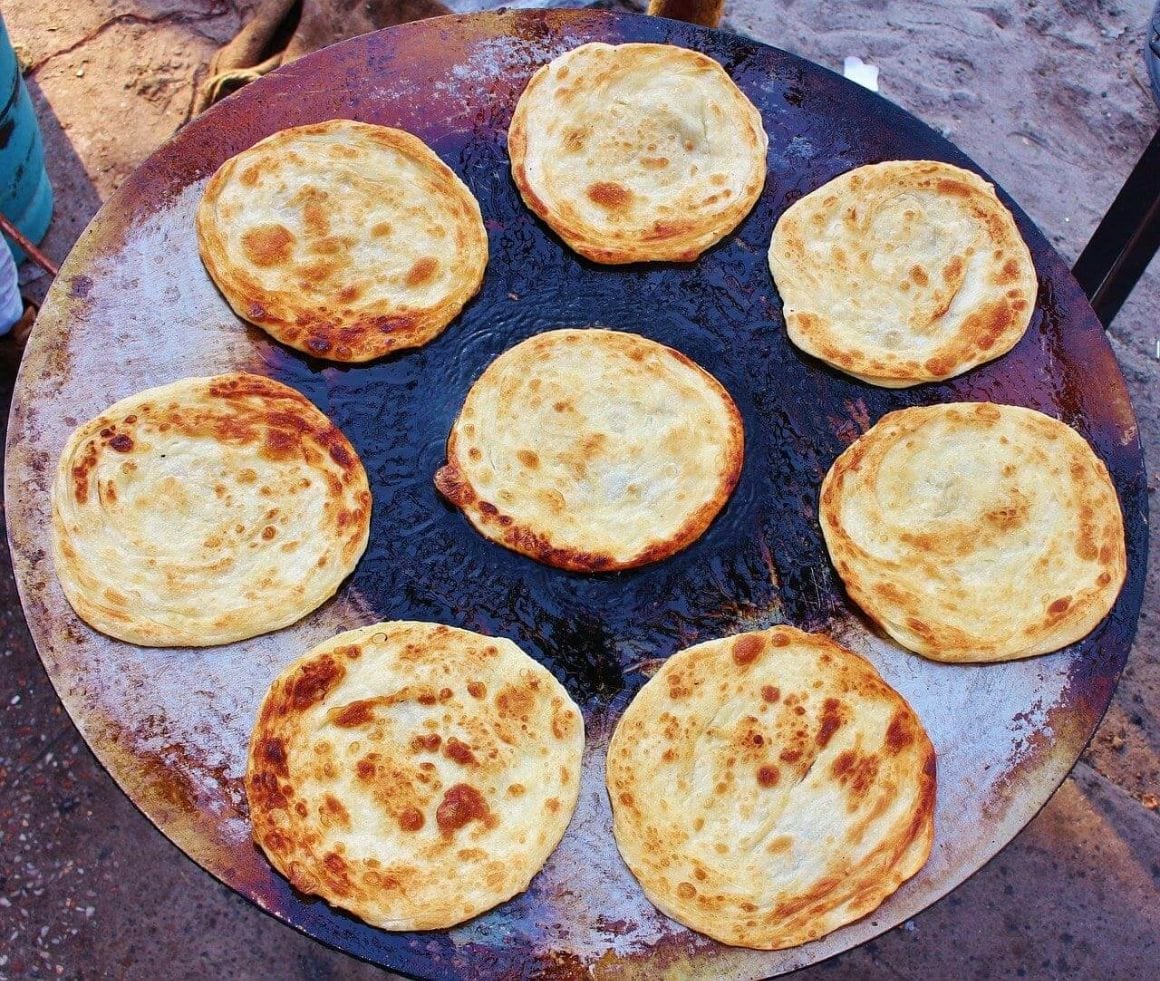
The majority of the food in Pakistan is served with flatbread. There’s a variety of them, each distinct and popular in its rights and best paired with one dish or another. One popular flatbread amongst them is paratha, which itself has several subgroups. The most famous kind is prepared with white flour with ghee inside and wrapped and shaped in a way that it has several layers. It is then cooked on an iron skillet with ghee which gives it a crispy first layer and soft underlayers. This paratha dipped in chai makes for a regular breakfast in Pakistan.
However, it also comes filled with a variety of fillings, popular among them are aloo paratha (potato), chicken cheese paratha, and Nutella paratha. When deep-fried, it is referred to as puri paratha and paired with BBQ dishes.
10. The Go-To Cold Dessert – Falooda
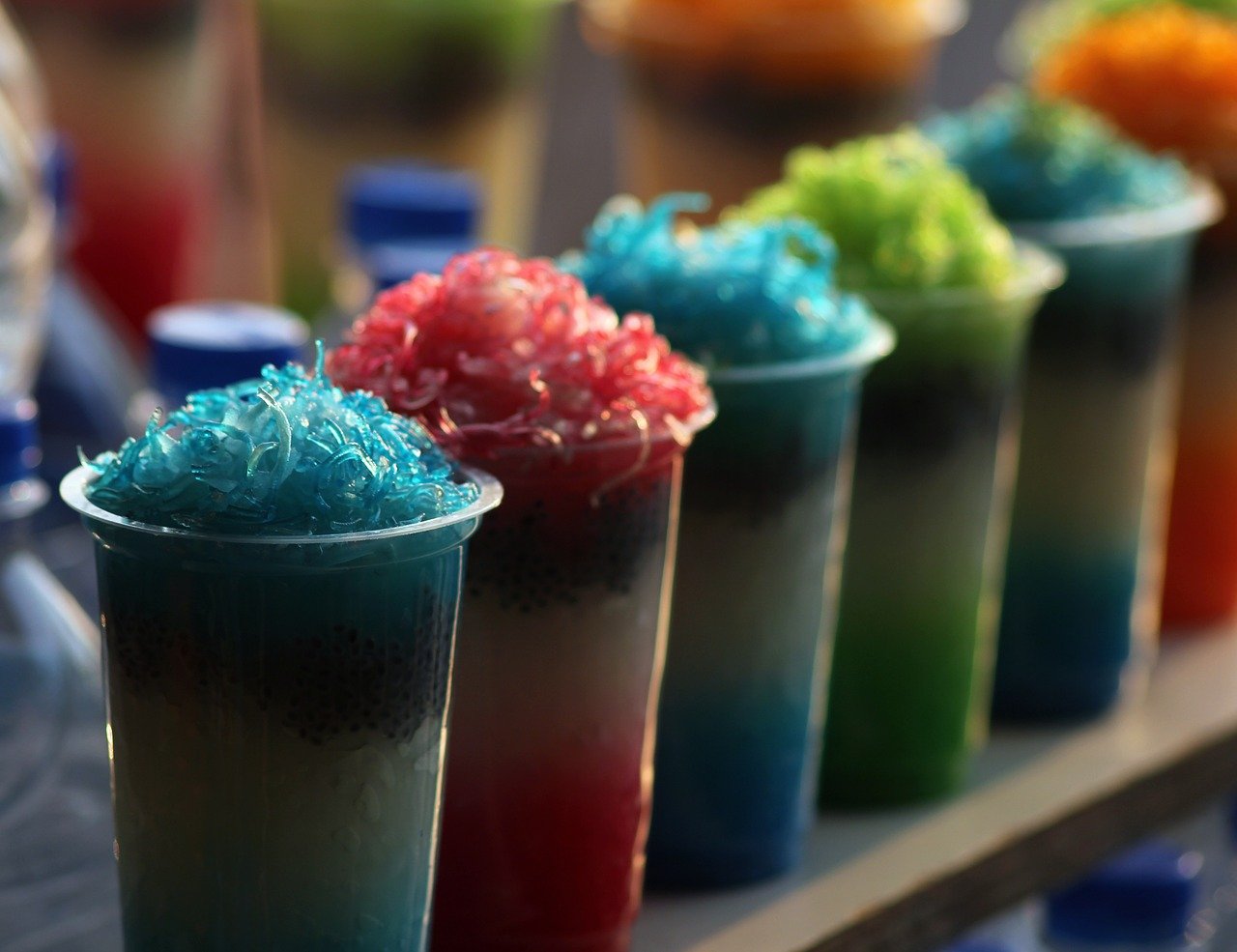
Falooda is often used as slang amongst Pakistanis when things go awry. It is also one of the most popular and delicious cold desserts in the country. Inspired by Persia’s faloodeh, this dessert is a concoction of clear noodles, rose and other types of syrups, sweet basil seeds, milk, and two scoops of ice cream served in a tall glass. You can have your own pick of ice cream flavors. It’s common practice in Pakistan to enjoy this cold dessert while sitting in your car, parked at the roadside.
11. A Favorite Delicacy – Haleem
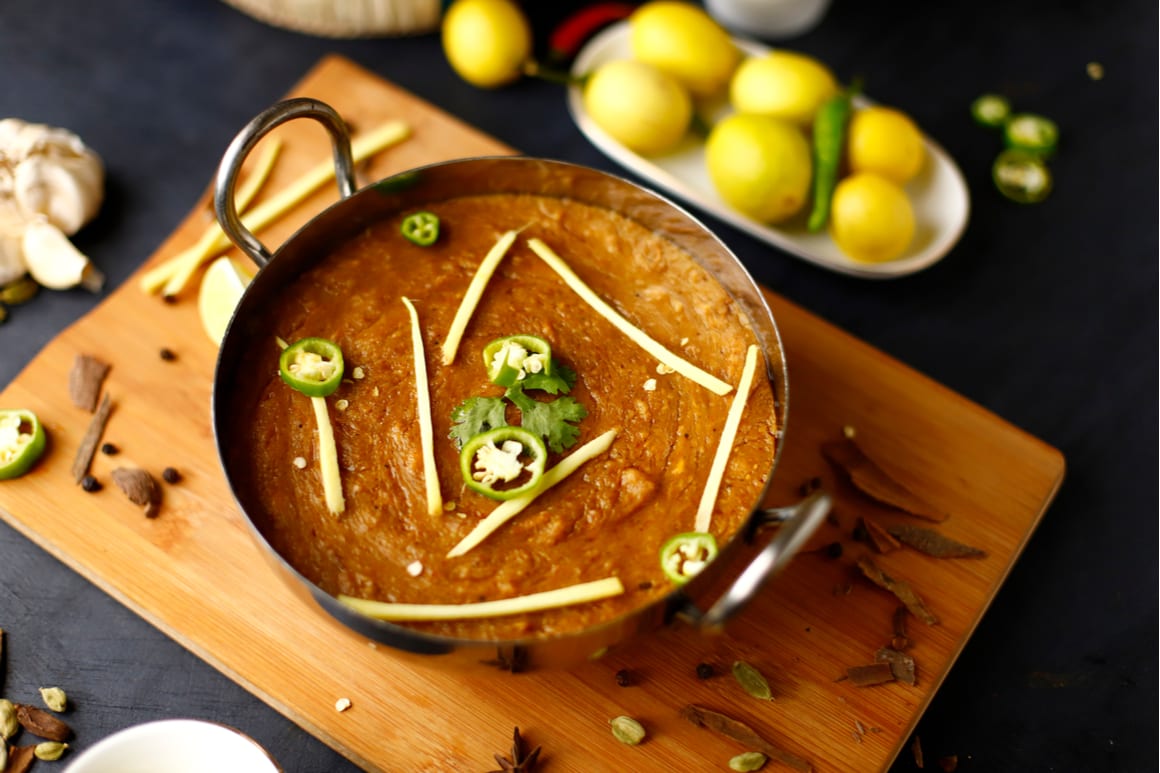
Introduced to South Asia by the Arabs, Haleem has become one of the most popular Pakistani cuisines. The delicious food is prepared using boneless beef, mutton, or chicken cooked in a variety of spices to add flavor. In a deep pot, the prepared meat is mixed with various staples including wheat, barley, and lentils, and slow-cooked all night until the meat becomes so tender that it becomes one with the thick stew.
The distinct texture and thick consistency of Haleem are achieved by stirring it with a special wooden spoon, constantly. The wooden spoon is specially shaped to mash the meat and staples together. The mouthwatering delicacy is garnished with crispy onions, julienned ginger, mint leaves, and a squeeze of lemon slice. During the Islamic month of Muharram, it’s a tradition in Pakistan for neighbors, communities, and large families to gather and stay up all night, taking turns stirring Haleem in large cauldrons.
12. Every Pakistani’s Favorite – Karahi
It’s a true challenge to meet anyone in Pakistan who doesn’t like karahi. Once you try it, you’ll understand why. The taste of this dish is mind-blowing with its delicious savory taste. Prepared using just a few ingredients, karahi certainly packs a punch.
While there are tons of different types of karahi, the basic process involves frying chicken pieces or boneless mutton on high flame in a deep wok called karahi and adding salt, black pepper, and green chilies, and lots of tomatoes. Meat cooked in tomato broth gives it a pleasant flavor and a very tender texture.
Other popular types of karahi include white karahi which includes a dollop of fresh cream, butt karahi (which has its own, small but strong fan base), and boneless karahi. Karahi is served with a special naan that enhances its flavor. For the best and the most authentic karahi, stop by a local restaurant or a dhaba in Khyber Pakhtunkhwa.
13. The Most Unconventional – Sajji
From the province of Baluchistan, Sajji has won the hearts of Pakistanis and tourists alike for its minimal ingredients, unconventional cooking methods, and melt-in-your-mouth taste. Originally a lamb dish but now more popular using chicken, Sajji involves marinating a whole chicken with salt and sometimes raw papaya paste and other mild seasonings. It would then be filled with either potatoes or rice.
The Baluchis traditionally cook it on an open fire, roasting it to perfection so that the outside remains crispy and smokey and the inside is tender to bite. Another method to cook sajji was to roast it in a clay oven called tandoor.
14. Pakistan’s Household Snack – Shami Kebab
If you get a glimpse inside the freezer of any Pakistani, you’re most likely to find a box full of frozen small patties, called shami kebabs. These homemade all-rounder snacks are prepared by adding split chickpea lentils, meat (chicken, beef, or mutton), and numerous whole spices in water and cooking them until they are tenderized. The chickpea lentils and meat are ground together with either the traditional sil batta (stone grinder and flat stone) or a regular electric blender. In the thick paste, chopped onions, green chili, mint, salt, and eggs are added. The resulting paste is then shaped into small patties and shallow fried to enjoy with paratha, dal chawal, or to prepare homemade burgers, amongst many other things.
15. The Infamous Pakistani Snack – Paani Puri/Gol Gappa
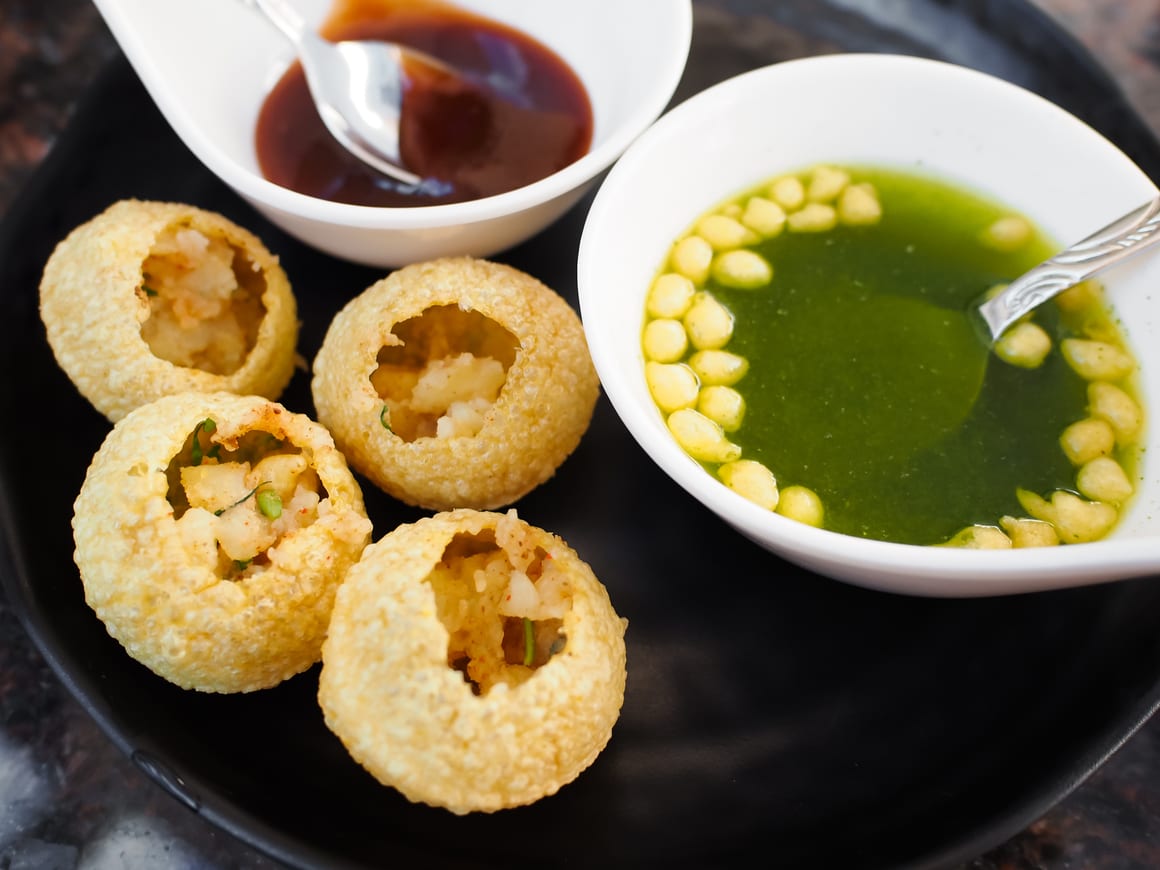
When in Pakistan, you’ll often see a man pushing a red cart around while playing an old Bollywood song to draw attention. This cart contains the infamous gol gappa snacks. While the proper name is Pani puri, most locals refer to it as gol gappa. I say ‘infamous’ because eating gol gappa is an art form and it might take a few tries to get it right.
The snack includes brittle and hollow small round shells with a hole in them called puri. This hole is then filled with chaat masala, a few boiled chickpeas, and sweet and sour tamarind chutney. It comes with a bowl full of spicy water (pani). The street food is eaten by dipping the brittle puri in the spicy water and putting it whole in your mouth as fast as possible. The combination of crispy puri, sweet chatni, and spicy and sour water gives you a burst of contradicting flavors, and eating it feels like an extreme sport.
ALWAYS sort out your backpacker insurance before your trip. There’s plenty to choose from in that department, but a good place to start is Safety Wing.
They offer month-to-month payments, no lock-in contracts, and require absolutely no itineraries: that’s the exact kind of insurance long-term travellers and digital nomads need.
SafetyWing is cheap, easy, and admin-free: just sign up lickety-split so you can get back to it!
Click the button below to learn more about SafetyWing’s setup or read our insider review for the full tasty scoop.
Final Thoughts
Well my mouth is watering.
This list contains Pakistani cuisines that are not only popular all over the world for their flavorsome taste but are also an integral part of Pakistani culture. Take chai, for instance, a beverage that remains at the heart of every Pakistani household, and there are hardly any days when a regular Pakistani isn’t running high solely on chai.
To experience the true taste of Pakistani food, there’s no better place than Pakistan itself. The people are the most hospitable bunch and there’s a high chance you’d get to try many of the aforementioned popular dishes as a guest in a friendly stranger’s home. And if you don’t happen to have enough time to socialize, don’t worry. Target the two most foodist cities in the country, and you are all set.
Buy Us a Coffee!
A couple of you lovely readers suggested we set up a tip jar for direct support as an alternative to booking through our links, since we’ve decided to keep the site ad-free. So here it is!
You can now buy The Broke Backpacker a coffee. If you like and use our content to plan your trips, it’s a much appreciated way to show appreciation 🙂


